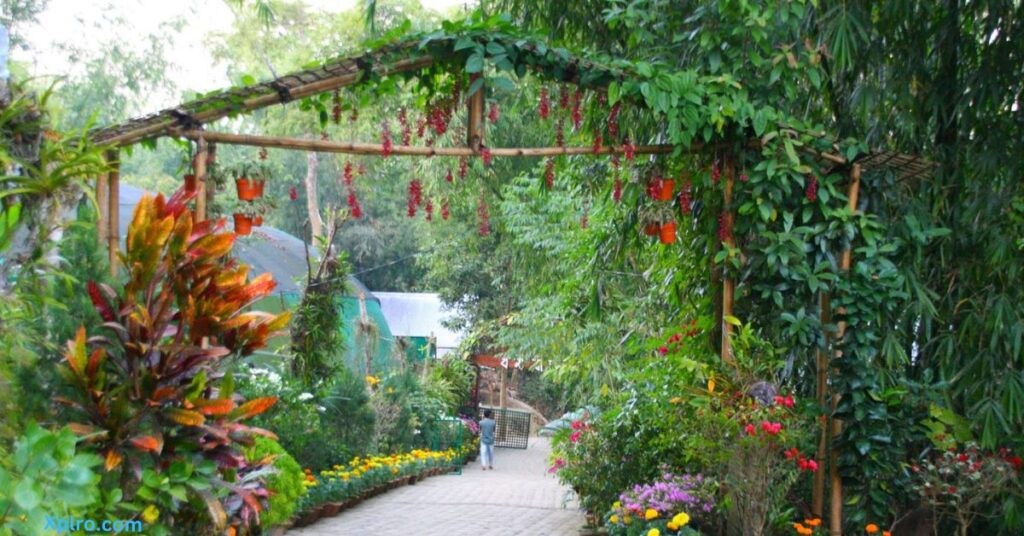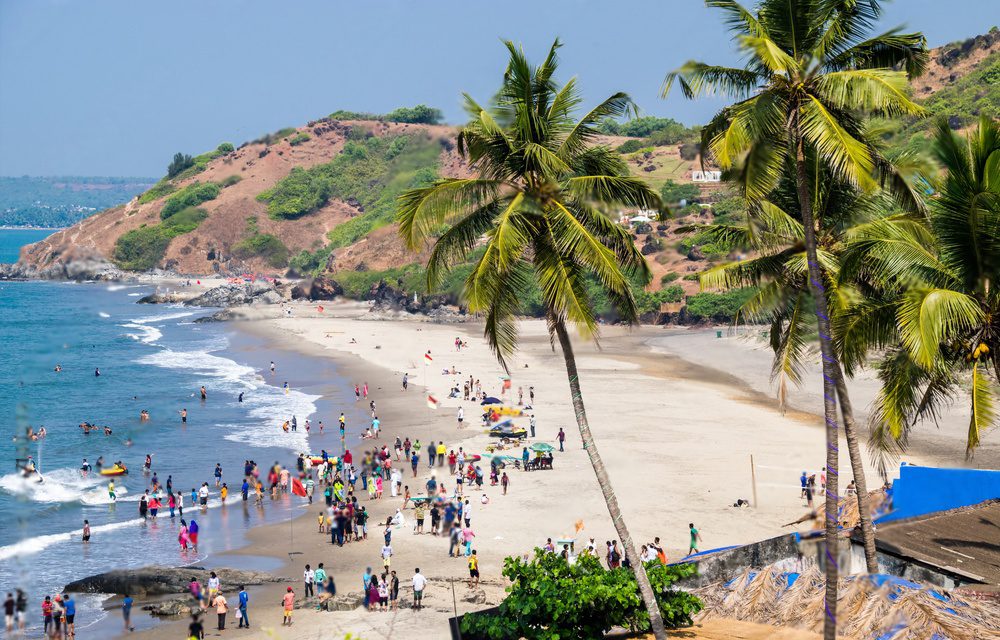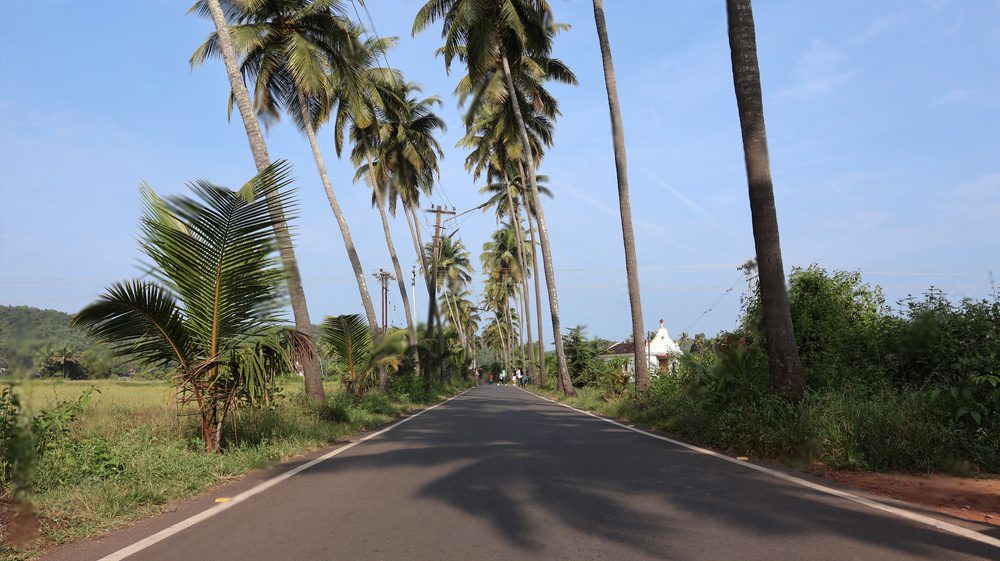Times to Visit Wildlife Parks in India, a land of stunning biodiversity, offers incredible opportunities to witness its diverse wildlife. From the majestic Bengal tiger to the elusive one-horned rhinoceros, its national parks are teeming with life. The best time to visit depends on various factors, including weather, animal behavior, and migratory patterns. Winter (November to February) is the peak season for wildlife viewing, with pleasant weather and active animals. Spring (March to May) is a great time to witness newborn cubs and other young animals. Monsoon (June to September) offers unique opportunities to see wildlife in lush, green landscapes, while early summer (April to June) and late summer (August to September) provide transitional periods with diverse animal behaviors.
Golden hour (sunrise and sunset) and full moon nights are ideal for spotting wildlife. Some parks offer night safaris, allowing visitors to encounter nocturnal creatures. Additionally, certain festivals coincide with wildlife viewing seasons, offering a cultural experience. Migratory bird seasons, such as winter in Bharatpur Bird Sanctuary, attract birdwatchers. Consulting local guides can provide personalized advice on the best times to visit specific parks and tailor your trip to your interests. By carefully considering these factors, you can maximize your chances of encountering India’s incredible wildlife and create lasting memories.
1. November to February: Ideal Time for Ranthambore National Park
Best Time to Visit:
- November to February: These cooler months offer the best conditions for wildlife viewing, with comfortable temperatures and increased animal activity.
Wildlife Highlights:
- Majestic Tigers: The park is renowned for its Bengal tigers.
- Elusive Leopards: Keep an eye out for these solitary predators.
- Playful Sloth Bears: These adorable creatures are a delight to watch.
- Diverse Birdlife: The park is home to a variety of bird species.
- Crocodile-Infested Lakes: Witness these reptiles in their natural habitat.
Things to Do:
- Early Morning Safari: The best time to spot tigers and other wildlife.
- Explore Ranthambore Fort: Discover the historical ruins and enjoy panoramic views.
Tips:
- Book in Advance: Especially during peak season.
- Hire a Knowledgeable Guide: They can enhance your wildlife viewing experience.
- Respect Wildlife: Maintain a safe distance and avoid disturbing the animals.
- Pack Essentials: Comfortable clothing, sunscreen, hat, and binoculars.
Experience the Thrill: Immerse yourself in the wild beauty of Ranthambore National Park and witness the wonders of nature firsthand.
2. March to June: Peak Time for Kanha National Park
Why Visit in Summer?
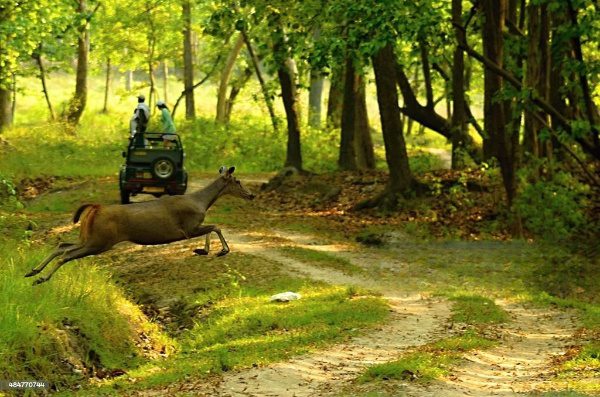

As the summer season arrives, Kanha National Park in Madhya Pradesh transforms into a wildlife photographer’s dream. The drying water bodies concentrate the wildlife around the remaining water sources, making sightings more likely.
Wildlife Highlights:
- The Majestic Tiger: Spot the elusive Bengal tiger, the park’s most prized inhabitant.
- The Unique Barasingha: Witness the graceful Barasingha deer, a species unique to India.
- Diverse Birdlife: Explore the park’s rich avian diversity, from colorful peacocks to elusive raptors.
- Other Wildlife: Encounter jackals, wild dogs, and various other creatures.
Things to Do:
- Jeep Safaris: Embark on thrilling jeep safaris to cover vast areas of the park.
- Birdwatching: Immerse yourself in the world of birds, armed with binoculars and a camera.
- Photography: Capture stunning images of wildlife in their natural habitat.
Tips for Your Visit:
- Pack Accordingly: Light, comfortable clothing, sunscreen, and a hat are essential.
- Stay Hydrated: Carry plenty of water, especially during the hot summer months.
- Respect Wildlife: Maintain a safe distance and avoid disturbing the animals.
- Book in Advance: Especially during peak season.
Experience the thrill of a summer safari in Kanha National Park and create unforgettable memories.
3. October to April: Best Season for Kaziranga National Park
Why Visit?
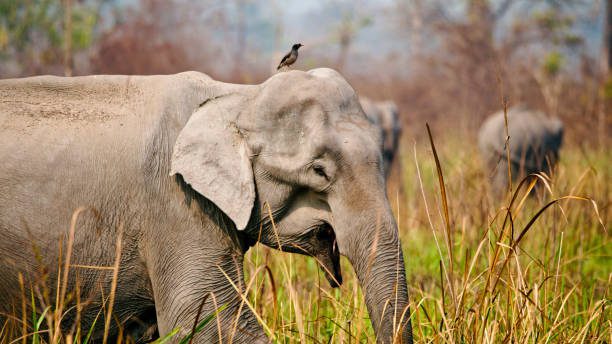

Kaziranga National Park in Assam is a global hotspot for wildlife enthusiasts, particularly those fascinated by the iconic Indian one-horned rhinoceros. The park’s vast grasslands and dense forests provide an ideal habitat for these magnificent creatures. The period from October to April offers the best conditions for exploration, with pleasant weather and increased wildlife activity.
Wildlife Highlights:
- One-Horned Rhinos: Witness the largest population of these unique rhinos in the world.
- Majestic Tigers: Encounter the elusive Bengal tiger, a top predator in the park.
- Gentle Giants: Observe the majestic Asian elephants in their natural habitat.
- Diverse Birdlife: Discover a rich variety of bird species, including migratory birds.
- Water Buffalo: Spot these large herbivores grazing in the wetlands.
Things to Do:
- Elephant Safari: Experience the thrill of an elephant safari, offering a unique perspective on the wildlife.
- Jeep Safari: Explore the park’s diverse landscapes and encounter a wide range of animals.
Tips for Your Visit:
- Book in Advance: Especially during peak season.
- Hire a Knowledgeable Guide: They can enhance your wildlife viewing experience.
- Respect Wildlife: Maintain a safe distance and avoid disturbing the animals.
- Pack Essentials: Comfortable clothing, sunscreen, hat, and binoculars.
Immerse yourself in the breathtaking beauty of Kaziranga National Park and create unforgettable memories.
4. April to June: Summer Adventures at Bandhavgarh National Park
Why Visit in Summer?
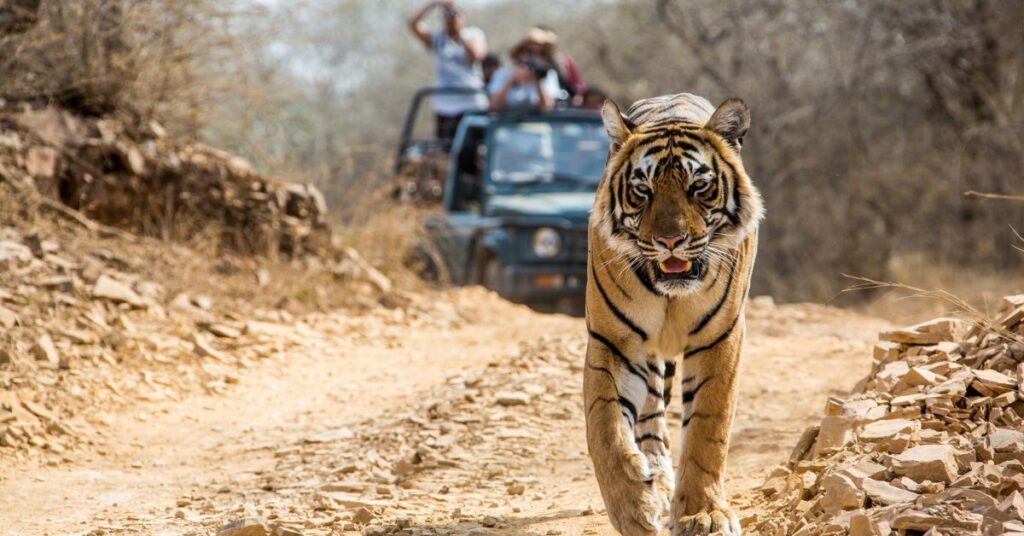

Bandhavgarh National Park in Madhya Pradesh is a tiger haven, and the summer months (April to June) offer prime opportunities to spot these majestic creatures. As the water sources dry up, animals congregate around the remaining waterholes, increasing the chances of thrilling wildlife encounters.
Wildlife Highlights:
- The Majestic Tiger: Witness the power and beauty of the Royal Bengal tiger.
- The Elusive Leopard: Keep an eye out for these solitary predators.
- Diverse Herbivores: Encounter Nilgai, Sambar deer, and other herbivores.
- Rich Birdlife: Explore the park’s diverse bird population, from colorful peacocks to elusive raptors.
Things to Do:
- Jeep Safaris: Embark on guided jeep safaris to explore the park’s core zones.
- Visit Bandhavgarh Fort: Discover the ancient fort, offering panoramic views of the park.
Tips for Your Visit:
- Pack Accordingly: Light, comfortable clothing, sunscreen, and a hat are essential.
- Stay Hydrated: Carry plenty of water, especially during the hot summer months.
- Respect Wildlife: Maintain a safe distance and avoid disturbing the animals.
- Book in Advance: Especially during peak season.
Experience the thrill of a summer safari in Bandhavgarh National Park and create unforgettable memories.
5. December to March: Perfect Weather at Gir National Park
Why Visit?
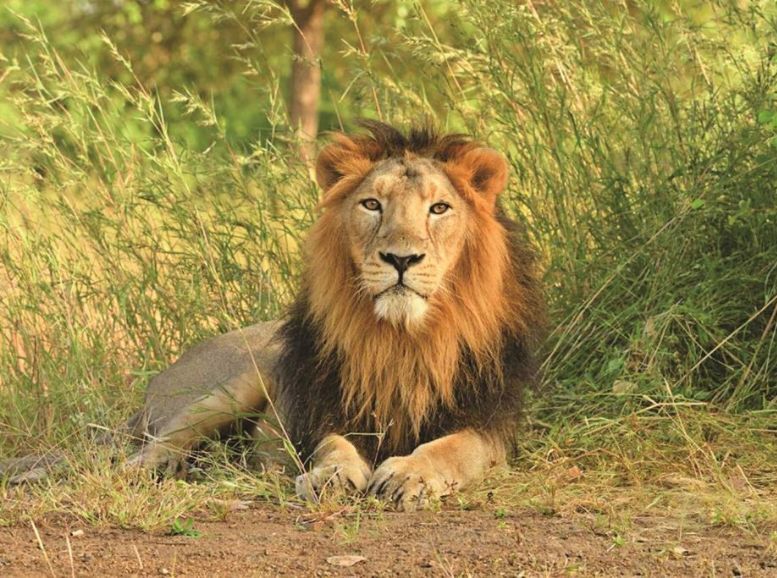

Gir National Park in Gujarat is a unique destination, renowned for being the last stronghold of the majestic Asiatic lion. The park’s diverse habitats, ranging from dry deciduous forests to grasslands, provide a perfect sanctuary for these magnificent creatures. The winter months (December to March) offer the most pleasant weather for exploring the park and spotting wildlife.
Wildlife Highlights:
- Asiatic Lions: Witness the unique Asiatic lion, a subspecies found only in Gir.
- Diverse Wildlife: Encounter a variety of other animals, including leopards, chital, and nilgai.
- Rich Reptile Life: Discover a diverse range of reptiles, such as pythons and cobras.
- Birdwatching Paradise: Explore the park’s birdlife, including peacocks, partridges, and migratory birds.
Things to Do:
- Lion Safari: Embark on a thrilling jeep safari to spot the Asiatic lions in their natural habitat.
- Birdwatching: Enjoy birdwatching along the serene water bodies and grasslands.
Tips for Your Visit:
- Book in Advance: Especially during peak season.
- Hire a Knowledgeable Guide: They can enhance your wildlife viewing experience.
- Respect Wildlife: Maintain a safe distance and avoid disturbing the animals.
- Pack Essentials: Comfortable clothing, sunscreen, hat, and binoculars.
Experience the thrill of a wildlife safari in Gir National Park and contribute to the conservation of the endangered Asiatic lion.
6. October to February: Best Time for Sundarbans National Park
Why Visit?


The Sundarbans, a UNESCO World Heritage Site in West Bengal, is a unique mangrove forest ecosystem. It’s one of the few places in the world where you can see the majestic Royal Bengal tiger in its natural habitat. The best time to visit is between October and February when the weather is pleasant and the wildlife is more active.
Wildlife Highlights:
- Royal Bengal Tigers: Encounter the elusive tiger, often seen swimming or basking in the sun.
- Saltwater Crocodiles: Spot these prehistoric reptiles lurking in the mangrove waters.
- Ganges River Dolphins: Witness these rare aquatic mammals.
- Diverse Birdlife: Observe a variety of bird species, including migratory birds.
- Reptiles and Amphibians: Discover a rich diversity of reptiles and amphibians.
Things to Do:
- Boat Safari: Embark on a thrilling boat safari through the mangrove forests.
- Village Exploration: Visit the local villages and experience the unique culture of the Sundarbans.
Tips for Your Visit:
- Hire a Knowledgeable Guide: They can enhance your wildlife viewing experience.
- Respect Wildlife: Maintain a safe distance and avoid disturbing the animals.
- Pack Essentials: Comfortable clothing, sunscreen, hat, and insect repellent.
Immerse yourself in the breathtaking beauty of the Sundarbans and experience the thrill of wildlife encounters in this unique ecosystem.
7. November to May: Best Season for Jim Corbett National Park
Why Visit?
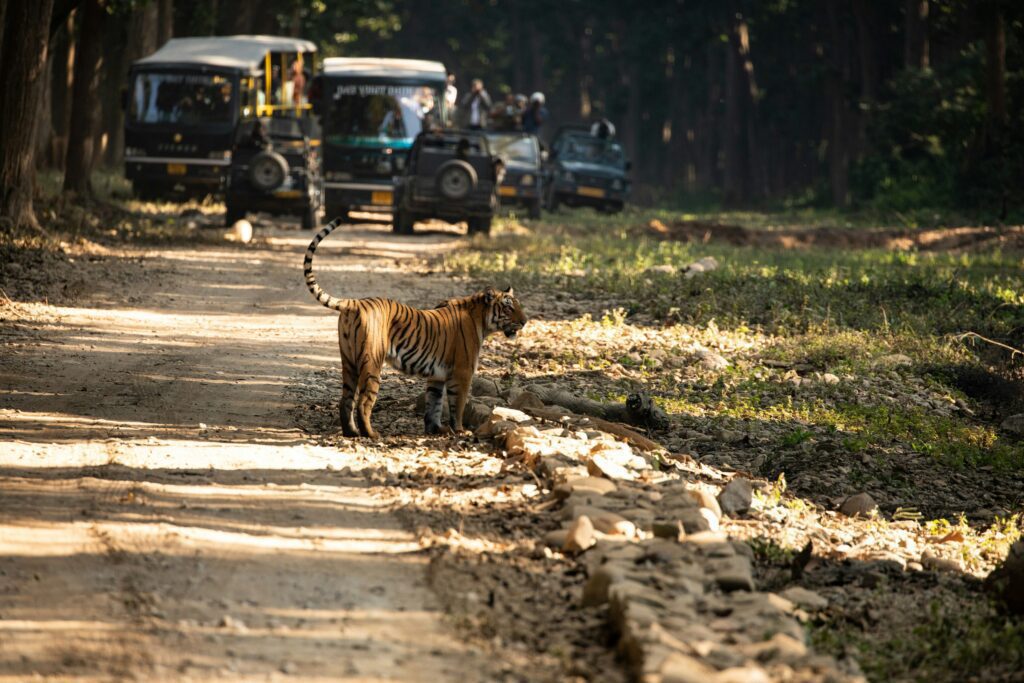

Jim Corbett National Park, India’s oldest national park, offers an incredible opportunity to witness the diverse wildlife of the Indian subcontinent. The park’s lush landscapes, abundant water bodies, and diverse habitats make it a haven for a variety of animals. The best time to visit is between November and May when the weather is pleasant and wildlife sightings are frequent.
Wildlife Highlights:
- Majestic Tigers: Encounter the elusive Bengal tiger, the park’s most prized inhabitant.
- Diverse Wildlife: Spot Asian elephants, deer, wild boars, and various other mammals.
- Rich Birdlife: Observe a wide range of bird species, including migratory birds.
Things to Do:
- Jeep Safari: Embark on a thrilling jeep safari to explore the park’s core zones.
- Riverine Safari: Enjoy a serene boat safari along the Ramganga River, spotting aquatic life.
Tips for Your Visit:
- Book in Advance: Especially during peak season.
- Hire a Knowledgeable Guide: They can enhance your wildlife viewing experience.
- Respect Wildlife: Maintain a safe distance and avoid disturbing the animals.
- Pack Essentials: Comfortable clothing, sunscreen, hat, and binoculars.
Experience the thrill of a wildlife safari in Jim Corbett National Park and create unforgettable memories.
8. December to March: Chilly Yet Thrilling at Periyar Wildlife Sanctuary
Why Visit?
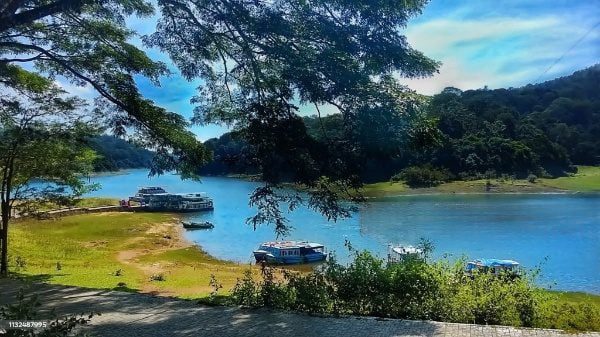

Periyar Wildlife Sanctuary, nestled in the Western Ghats of Kerala, is a breathtaking natural wonder. The lush green forests, serene lakes, and diverse wildlife make it a paradise for nature lovers. The best time to visit is between December and March when the weather is pleasant and ideal for wildlife viewing.
Wildlife Highlights:
- Majestic Elephants: Witness herds of elephants grazing and bathing in the lake.
- Endemic Wildlife: Spot the unique Nilgiri langur and the Indian bison.
- Diverse Birdlife: Observe a variety of bird species, including colorful parrots and hornbills.
- Rare Tiger Sightings: While rare, the possibility of spotting a tiger adds to the excitement.
Things to Do:
- Boat Safari: Embark on a serene boat cruise on Periyar Lake, offering stunning views and wildlife sightings.
- Nature Walks: Explore the park’s trails on a guided nature walk, encountering diverse flora and fauna.
- Bamboo Rafting: Experience the thrill of bamboo rafting on the river, surrounded by lush greenery.
Tips for Your Visit:
- Book in Advance: Especially during peak season.
- Respect Wildlife: Maintain a safe distance and avoid disturbing the animals.
- Pack Essentials: Comfortable clothing, sunscreen, hat, and insect repellent.
Immerse yourself in the tranquility of Periyar Wildlife Sanctuary and create unforgettable memories.
9. March to June: Great Time for Pench National Park
Why Visit in Summer?
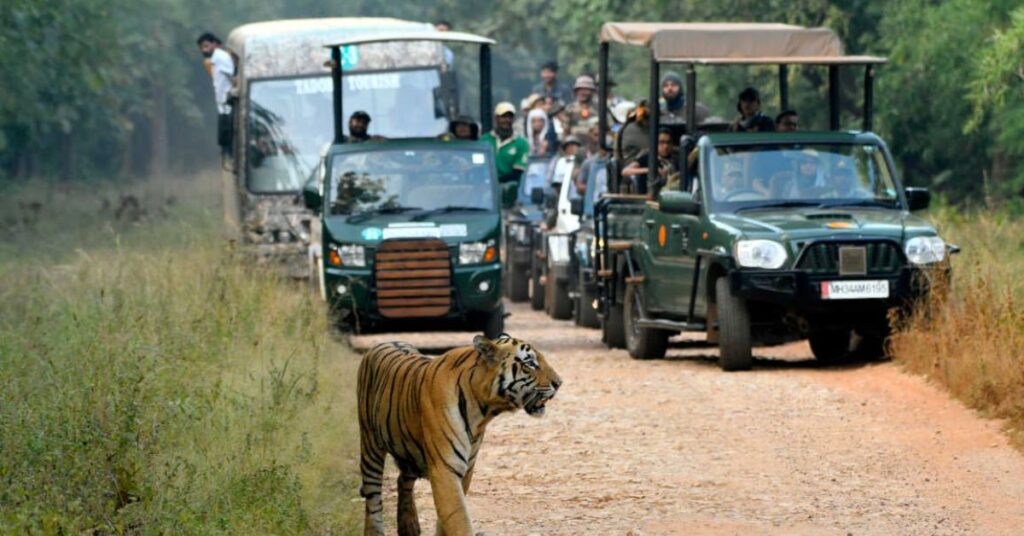

Pench National Park in Madhya Pradesh is a hidden gem, famous for its stunning landscapes and diverse wildlife. The summer months (March to June) offer an excellent opportunity to witness the park’s beauty. As the water sources begin to dry up, animals congregate around them, making sightings more likely.
Wildlife Highlights:
- Majestic Tigers: Encounter the elusive Bengal tiger, the park’s star attraction.
- Graceful Leopards: Spot these solitary predators camouflaged in the dense forests.
- Wild Boars and Gaur: Observe these large herbivores in their natural habitat.
- Diverse Birdlife: Explore the park’s rich avian diversity, including colorful peacocks and elusive raptors.
Things to Do:
- Daytime Safari: Embark on a thrilling jeep safari to explore the park’s core zones.
- Nature Walks: Enjoy leisurely nature walks, admiring the park’s scenic beauty.
- Picnic: Relax amidst the serene surroundings and enjoy a picnic.
Tips for Your Visit:
- Pack Accordingly: Light, comfortable clothing, sunscreen, and a hat are essential.
- Stay Hydrated: Carry plenty of water, especially during the hot summer months.
- Respect Wildlife: Maintain a safe distance and avoid disturbing the animals.
- Book in Advance: Especially during peak season.
Experience the magic of Pench National Park and relive the tales of The Jungle Book.
10. October to February: Winter Bliss at Manas National Park
Why Visit?
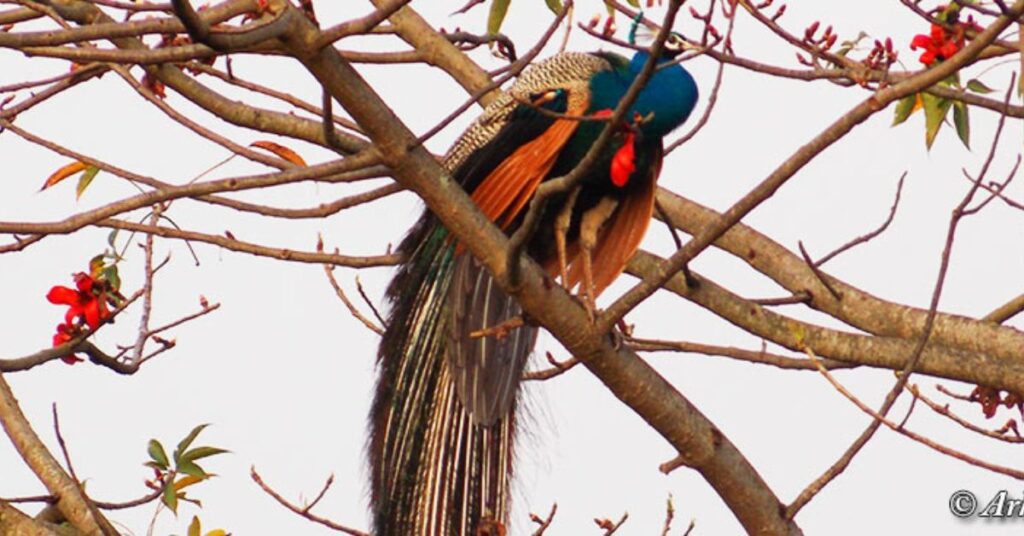

Manas National Park in Assam is a UNESCO World Heritage Site renowned for its diverse wildlife and stunning natural beauty. The park’s pristine forests, flowing rivers, and lush grasslands provide a perfect habitat for a variety of animals. The best time to visit is between October and February when the weather is pleasant and wildlife sightings are frequent.
Wildlife Highlights:
- Rare Primates: Encounter the elusive golden langur and the endangered pygmy hog.
- Large Mammals: Spot one-horned rhinos, tigers, and elephants in their natural habitat.
- Diverse Birdlife: Observe a wide range of bird species, including migratory birds.
Things to Do:
- Jeep Safari: Embark on an early morning jeep safari to explore the park’s diverse habitats.
- Riverine Safari: Experience the thrill of a river safari, witnessing aquatic wildlife.
- Tea Estate Visit: Explore the nearby tea estates and learn about the tea-making process.
Tips for Your Visit:
- Book in Advance: Especially during peak season.
- Hire a Knowledgeable Guide: They can enhance your wildlife viewing experience.
- Respect Wildlife: Maintain a safe distance and avoid disturbing the animals.
- Pack Essentials: Comfortable clothing, sunscreen, hat, and insect repellent.
Immerse yourself in the pristine beauty of Manas National Park and contribute to the conservation of its unique biodiversity.
Final Tips for Times to Visit Wildlife Parks in India
- Book Early: To secure your safari slots, especially during peak seasons, it’s advisable to book well in advance.
- Dress for the Occasion: Opt for muted colors like khaki, brown, or olive green to minimize your visibility in the wild.
- Pack Essentials: Remember to carry essential items like binoculars, a camera, and plenty of water to stay hydrated.
FAQs
1. What is the best time to visit wildlife parks in India?
- The ideal time to visit wildlife parks in India can differ depending on the region and the park itself. Generally, the period from November to February is considered favorable for most parks, thanks to the pleasant weather and thriving wildlife activity. However, for parks like Bandhavgarh and Kanha, the best time for wildlife sightings is between March and June, as the animals are more visible around water sources during the hotter months.
2. Do I need to book safaris in advance?
- Yes, it is highly advisable to book your safaris in advance. Popular wildlife parks, such as Ranthambore, Jim Corbett, and Kaziranga, tend to get fully booked, especially during peak seasons. To ensure a seamless experience and secure your spot, make your reservations early.
3. What is the difference between a jeep safari and an elephant safari?
- Jeep safaris and elephant safaris offer different experiences. A jeep safari allows you to cover more ground and increases your chances of spotting tigers and other large animals. On the other hand, an elephant safari provides a unique perspective, especially in parks like Kaziranga, where it is easier to get closer to certain animals, such as the Indian one-horned rhinoceros, in areas that are inaccessible by jeep.
4. What should I wear for a safari?
- When dressing for a safari, choose neutral or earthy colors like khaki, beige, and olive green, as these colors help you blend in with the environment. Opt for comfortable, full-sleeve clothing to protect against the sun and insect bites. Wearing sturdy shoes is important as well, since you may encounter uneven or rugged terrain during your journey.
5. Are children allowed on safaris?
- Most wildlife parks in India allow children on safaris, but it is always best to confirm with the park authorities beforehand. Keep in mind that long safaris may be tiring for young children, and maintaining a calm and quiet demeanor is necessary to avoid disturbing the animals.
6. How many people can fit in a jeep during a safari?
- Typically, a safari jeep can accommodate up to six passengers, in addition to the driver and a guide. Some parks may have vehicles of different sizes, so it is important to verify the capacity when making your safari reservations.
7. Are safaris safe?
- Safaris are generally safe, provided that visitors follow the guidelines set by their guides. It is crucial to remain seated at all times, keep voices low, and avoid any actions that could provoke or disturb the animals. Additionally, never attempt to leave the vehicle or get too close to wildlife.
8. Can I bring food and drinks during the safari?
- While bringing water bottles on a safari is typically allowed, carrying food is discouraged because it could attract animals and create safety concerns. Eating inside the vehicle is not recommended, as maintaining cleanliness and avoiding any disruption to wildlife are priorities.
9. What kind of camera gear is recommended for a wildlife safari?
- For capturing wildlife during a safari, a DSLR camera equipped with a telephoto lens (preferably 200mm or higher) is ideal. This setup allows you to photograph animals from a distance. Carrying a sturdy camera bag is also important, along with extra batteries and memory cards. Using a monopod can be helpful for stable shots, especially when photographing animals in motion.
10. Will I definitely see tigers if I visit a park known for them?
- Unfortunately, tiger sightings cannot be guaranteed, even in parks known for their tiger populations. These majestic creatures are elusive and sightings depend on various factors, including the time of year, animal behavior, and a bit of luck. Parks like Ranthambore, Bandhavgarh, and Kanha have higher chances of sightings, but there is no certainty.
11. What are some other animals I can expect to see?
- India’s wildlife parks are teeming with diverse animal species. Besides tigers, you may encounter elephants, leopards, Indian rhinoceroses, crocodiles, and various deer species. Many parks also host a rich bird population and an array of reptiles. The variety of wildlife you will see depends largely on the specific park you visit.
12. Are there any rules I should follow during a safari?
- There are several important rules to follow during a safari. Staying silent and avoiding sudden movements is crucial to avoid disturbing the animals. Littering and feeding animals are strictly prohibited, as these actions can harm the ecosystem. Flash photography should be avoided as well, as it may startle or disturb the wildlife. Lastly, always follow your guide’s instructions to ensure your safety and the safety of the animals.
